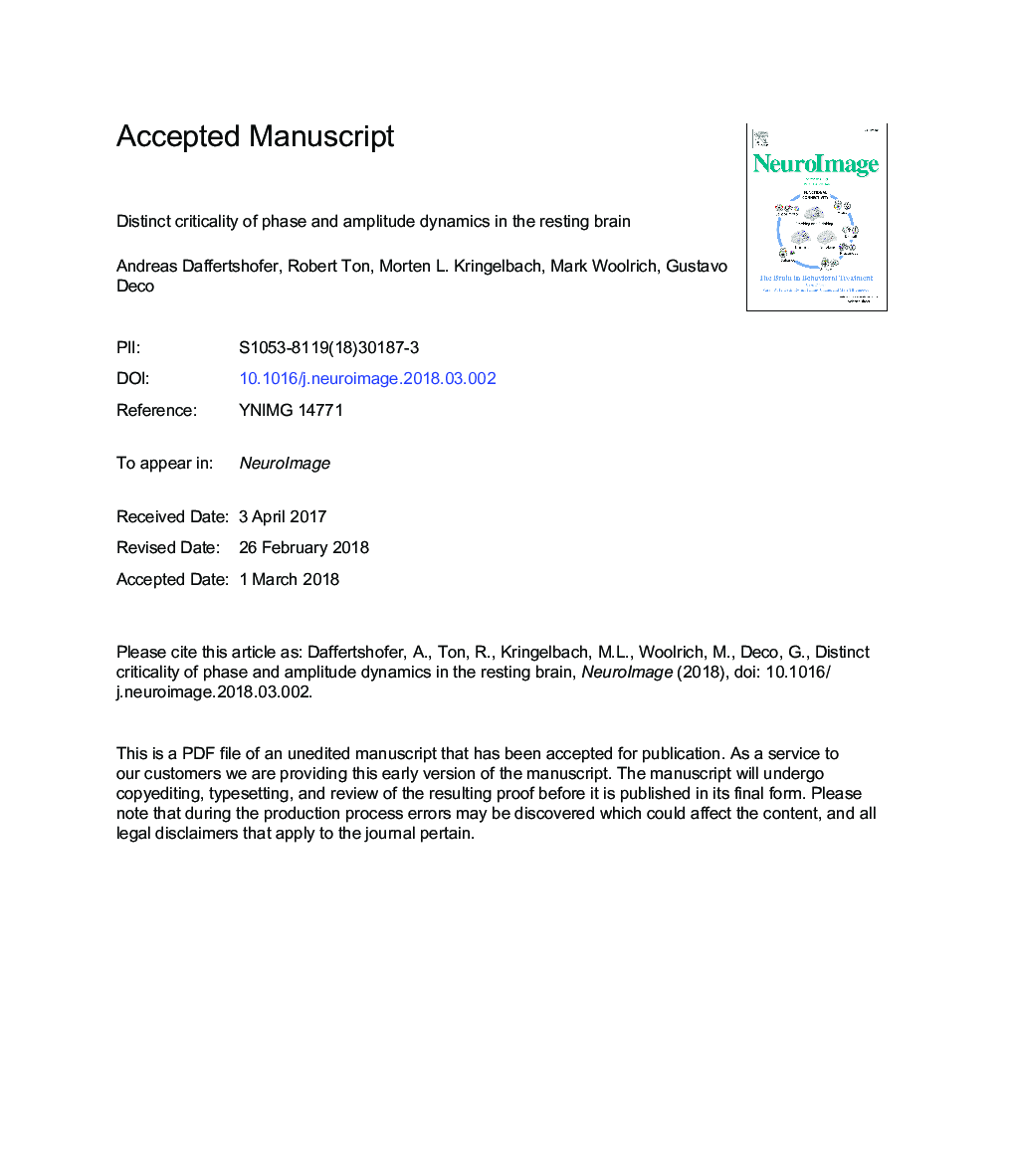| Article ID | Journal | Published Year | Pages | File Type |
|---|---|---|---|---|
| 8957315 | NeuroImage | 2018 | 19 Pages |
Abstract
Converging research suggests that the resting brain operates at the cusp of dynamic instability, as signified by scale-free temporal correlations. We asked whether the scaling properties of these correlations differ between amplitude and phase fluctuations, which may reflect different aspects of cortical functioning. Using source-reconstructed magneto-encephalographic signals, we found power-law scaling for the collective amplitude and for phase synchronization, both capturing whole-brain activity. The temporal changes of the amplitude comprise slow, persistent memory processes, whereas phase synchronization exhibits less temporally structured and more complex correlations, indicating a fast and flexible coding. This distinct temporal scaling supports the idea of different roles of amplitude and phase fluctuations in cortical functioning.
Related Topics
Life Sciences
Neuroscience
Cognitive Neuroscience
Authors
Andreas Daffertshofer, Robert Ton, Morten L. Kringelbach, Mark Woolrich, Gustavo Deco,
